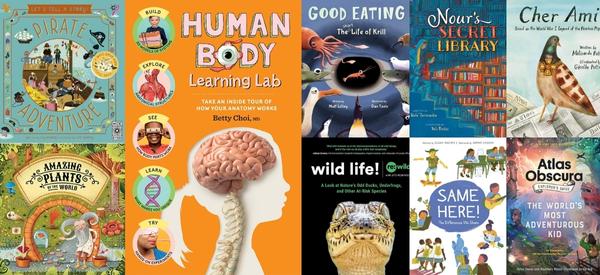Encourage Kids to Write a Journal (+ Ideas to Get Started)
This post may contain affiliate links.
Why should you encourage your kids to start writing a journal? The benefits of journal writing include improved writing fluency, improved communication skills, and increased confidence. Plus, it gives your child a lifelong skill that will help with their emotional intelligence.

Encourage Kids to Write a Journal
Once kids can pick up a pencil or crayon, they can start writing a journal. It doesn’t have to actually be words, it can be pictures, letters, stickers, or cut-and-pasted memorabilia.
The goal of writing a journal is to express yourself on paper. This goal doesn’t change whether a child is four or ten. Sure, the page will look different as the writer grows, but the purpose is still the same.

I like to mention that goal because it’s relevant when you think about what you’re seeing. Are you seeing scribbles that tell a story? Good. Are you seeing letters that represent words? Great. Are you seeing drawings and words that express emotion? Fantastic.
All of the above count as expressions on paper.
Let your child write freely without any correction. Journals are for (everyone together now) EXPRESSION, not perfection.
You’re encouraging fluency. One way to discourage writing is to insist on using lines and writing in perfect spelling. That can really stop the flow of writing.

Journal writing provides a way for kids to:
- be creative
- practice and develop writing (and art) skills
- express feelings and thoughts in writing (and art)
- develop fluency in writing
- build confidence
Journal writing done this way (without adult interference) helps kids to become confident writers.
And if your child asks how to spell something, ask them to say the word out loud and listen to the sounds in the word, then write down what sounds they hear. This is called invented spelling. Read the latest research on invented spelling here. Don’t worry about young writers spelling words wrong, especially in a journal. Sounding out the words and writing down those sounds is the best way to start! Read more about teaching children spelling.

How Kids Can Start a Writing Journal
Set a Daily Time for Journals
It’s helpful for kids, and for adults, to have a daily routine for writing. Consider the rhythms of your life. Would just after breakfast or a quiet afternoon time be best? You may have to try a few different times to find what works for your child and your daily schedule.
Get a Journal and Writing Supplies
Any old notebook will do.
You can leave it basic or decorate it. (Scroll down for fun decorating ideas.)
Or, you can buy a journal with actual prompts. Often these don’t give kids enough open space for their imaginations. That being said, every child is different and if you think a journal with prompts or a fill-in journal would work for your child, try it and see. Here are a few choices:
Me: A Compendium: A Fill-in Journal for Kids Q&A a Day for Kids: A Three-Year Journal
Q&A a Day for Kids: A Three-Year Journal Peaceable Kingdom Secrets, Dreams and Wishes Glow in the Dark 6.25
Peaceable Kingdom Secrets, Dreams and Wishes Glow in the Dark 6.25 Mom and Me: An Art Journal to Share: Create and Connect Side by Side (A Side-by-Side Book)
Mom and Me: An Art Journal to Share: Create and Connect Side by Side (A Side-by-Side Book) Between Mom and Me: Mother Son Journal
Between Mom and Me: Mother Son Journal Love, Mom and Me: Mother Daughter Journal
Love, Mom and Me: Mother Daughter Journal
Of course, provide pencils, markers, stickers, paint, and stamps.
Scentco Colored Smencils 10-pack of Gourmet Scented Color Pencils Crayola Super Tips Washable Markers, 100 Count, Bulk, Great for Kids
Crayola Super Tips Washable Markers, 100 Count, Bulk, Great for Kids Melissa & Doug Happy Handles Wooden Stamp Set: 6 Stamps and 6-Color Stamp Pad
Melissa & Doug Happy Handles Wooden Stamp Set: 6 Stamps and 6-Color Stamp Pad
Don’t forget to set aside an area for your supplies and the actual journal writing itself.
Write in Your Journal
Help your child come up with his or her own topics. Make a list of your child’s ideas on the first or last page of the notebook for future reference. Use picture books and experiences to brainstorm topics. Did you just read an alphabet book? How about writing an alphabet list in your journal? Did you just go for a walk outside? Write about your walk. Or write about your walk from the perspective of your dog. That sort of thing.
You might also want to visit: Prompts for Kids and Story Starters for Kids.
Ideas for Decorating Your Journals


Tape Relief: Tape down Washi tape in any arrangement on your cover. Paint over the entire cover. Let dry. Peel off the tape.


















The earlier we get students to begin journaling the better their communication skills will be. This does not just impact how a student performs in the classroom but how they function in life. If students are encouraged to write how they are feeling about situations in their lives and gets these feelings and emotions out, the better they will be able to communicate these concerns when they are at an age when it might dramatically impact the choices and direction of their lives. So many kids do not have role models to follow when it comes to interacting with others, since many families are spread so thin with jobs, activities, and social demands. Kids need teachers to direct them to healthy outlets for their feelings.
so true, thanks!